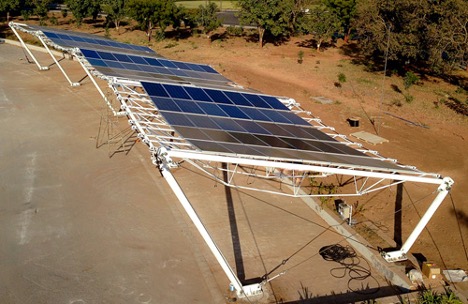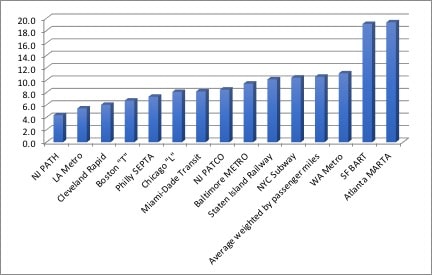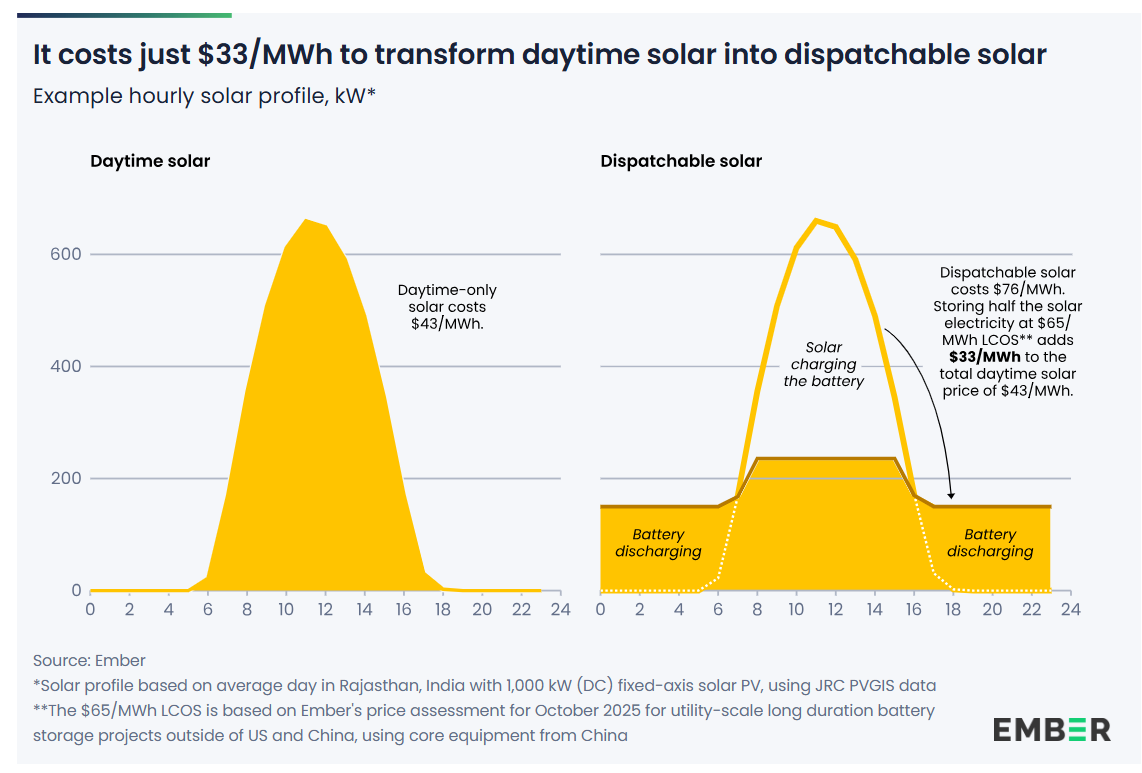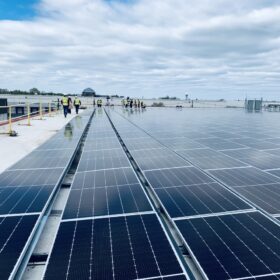With the cost of solar panels falling through the floor (2020 solar module pricing is now below $0.25/watt) and projected to continue falling steadily, where are we going to put all those beautiful panels?
Rooftops are a great place. Open land can be good in some areas, but not when it competes with natural habitat or agriculture. What about parking lots, canals, train lines, highways, and other areas already being used for some other activity?
That seems like a great idea to a lot of people and a number of companies are working on this growing area for solar deployment. I’ll focus on just one company in this piece, P4P Energy, a small company founded by Stephen Conger and based in Boulder, Colorado.
(Disclosure: I have no financial interest in this company, though I did used to own and run a small company focused on solarizing trains, Solar Trains LLC, which is now defunct).
P4P has designed and installed a number of solar canopies in India over canals, one of the more promising use cases for this new technology. Their technology relies on an innovative design that significantly reduces the amount of racking required to support the panels. Basically, the designs rely on cables to support the panels, rather than fixed racking. And that reduces the costs substantially.
A major advantage of this design is the ability to string cables over a longer distance without the support needed in traditional racking approaches. They’re also kind of pretty because of the natural catenary curve the cabling system provides.

A P4P Energy parking lot solar canopy under construction in India (Source)
P4P has so far focused on parking lots and water ways. But what about train lines, both over train tracks and adjacent to train tracks? Could this technology power a new system of ultra-efficient electric trains in countries like the U.S. that don’t have a very efficient train system?
Electric trains are so efficient that a single 300 W solar panel can provide up to 7,000 miles of an individual’s commuting miles per year, or 5 miles to 20 miles per day. The national average, based on National Transportation Database data on the efficiency of the various U.S. electric train systems, is about 4,000 miles per year for each 300 W solar panel. One mile of train tracks can support 1 MW to 3 MW of solar panels, which can provide 2 million to 6 million passenger-miles of train travel. Yes, “million.”
The passenger-miles provide by solar or other renewables is practically emission free, even if we include the energy costs required for manufacture and shipping of the panels.

Miles of daily train travel per 300 watt solar panel (source: NTD data and NREL insolation data).
These numbers highlight just how efficient electric trains can be. The equivalent miles from one 300 W solar panel for a regular electric car — my Chevy Bolt, for example — would be just 1,600 miles per year or 4.5 miles per day, or about 40% of the national average for U.S. electric trains. So electric trains are about 2.5 times more efficient than most personal EVs, which are in turn about 2.5 to 3 times more efficient than a highly efficient internal combustion engine vehicle.
These numbers translate to the ability to supply a majority or even all of U.S. electric train systems from solar power next to or over their train tracks and parking lots.
Does anyone see a national economic recovery plan potential with this new technology and the vast potential over the nation’s carports, waterways, trains and highways?

The views and opinions expressed in this article are the author’s own, and do not necessarily reflect those held by pv magazine.
This content is protected by copyright and may not be reused. If you want to cooperate with us and would like to reuse some of our content, please contact: editors@pv-magazine.com.








“P4P has designed and installed a number of solar canopies in India over canals, one of the more promising use cases for this new technology. Their technology relies on an innovative design that significantly reduces the amount of racking required to support the panels. Basically, the designs rely on cables to support the panels, rather than fixed racking. And that reduces the costs substantially.”
When I see this, I immediately think of the Tacoma narrows bridge in 1940. You may not have have the torque moment, but I can see one of these canopies’ flexing up and down like a loose umbrella. Solar PV panels are tested for one inch ice “balls” at about 55 MPH, they are not necessarily tested for flexing up and down over a period of time.
Kindly supply me the name of companies those being installing PV solar plant so that I can do my our purchase of inverter station and solar panels …
If you have the best suggestion for solar on a 40 ft motorhome- please tell!
No mention of the need to withstand weather events. Thinking just of Cleveland (the Cleveland Rapit Transit was given as an example) 50 mph wind gusts and two foot snowfalls are common. A flexible canopy of solar panels would seem to be at risk.
The P4P designs are rated as well or better than traditional designs in terms of high stress weather events.
The need to pitch panels towards the equator will affect the utility of these factors canopies at high lattitudes.
They could be useful for temporary installations, though, like festivals, military outposts, etc.
That’s not an issue b/c you just make one side higher than the other with longer poles, as required.
Great
Pfft…I want one of these over my house covering the entire roof.
House in the shade all day when its 110 degrees out, and more electricity than I could ever use. I could turn EVERYTHING on, set the AC to 68, and my electric costs in the summer would be cut in half just by the shade.
Calvin Barrows,retired engineer theory on why London Underground trains become too hot in the summer reaching 30-36°C is because the tube trains are heated by the sun when running on the surface and can’t cool down quickly in the tunnels,he measured a 6°C increase while a train ran overground between Leyton and Epping Station,existing theory is overheating is from the trains,mainly the brakes in the tunnels, however the completely underground Glasgow Subway,Scotland trains had an average temperature 16°C in 2018 even during the 31°C summer heatwave.His solutions are solar reflective paint and glass windows to be fitted to the tube trains and for shading to be installed at the
depots,solar canopies could be installed over the tracks which will also reduce buckling of the rails and expanding London Overground trains overhead cables during a heatwave and at the yards.
Riding Sunbeams Ltd (I recommend reading Riding Sunbeams 2017 and Riding Sunbeams Before Dawn 2019 studies) installed a solar farm to power 3rd rail trains in Aldershot,Surrey,UK and plans to install a solar farm for the London Underground Central Line,the hottest route,I think solar canopies reducing overheating is better.
Sorry, no rigid PV module would survive more than a few month/years in typical wind conditions.